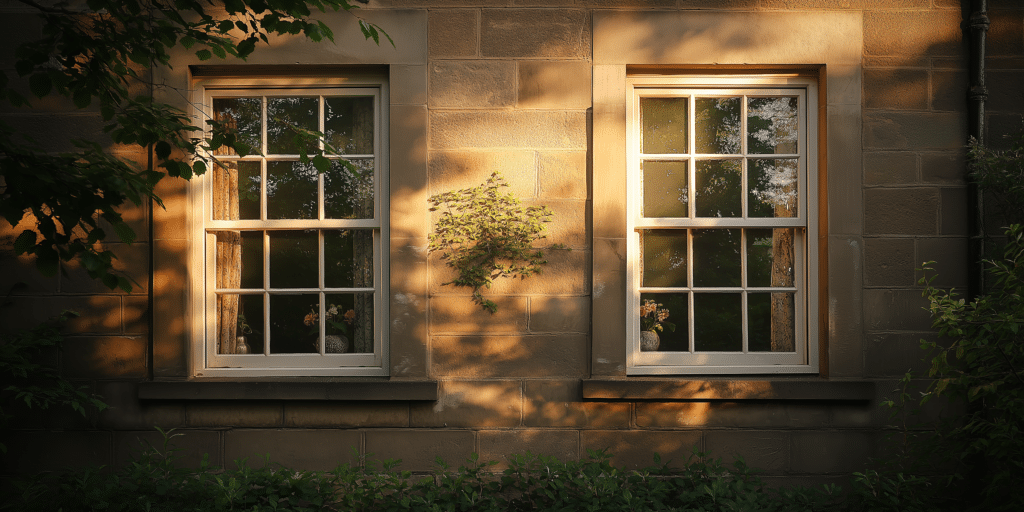Introduction to Sash Window Shimming

Shimming is critical for levelling sash windows, primarily to improve insulation and structural stability. Shimming involves inserting shims—small, wedge-like pieces—into the frame to align the sash window correctly within its opening. Without proper shimming, sash windows can experience drafts, heat loss, and even premature wear.
This process enhances thermal efficiency and overall window performance by sealing gaps and ensuring smooth movement. Shimming is particularly beneficial in the UK, where weather conditions can cause wood frames to warp over time, leading to energy inefficiencies. A study by Sash Window Experts indicated that properly shimmed sash windows can reduce heat loss by up to 20%, showcasing the significant energy savings that shimming offers.
- When to Consider Shimming: Shimming is typically needed during window installation or replacement, but it may also be required for existing windows in older properties where frames have settled unevenly. Consider shimming if you feel drafts, see gaps, or notice rattling.
- Benefits of Proper Shimming: Besides comfort, shimming boosts energy efficiency by reducing air leakage and improving insulation. This not only lowers heating bills but also increases the lifespan of the window frame. According to the Historic Window Conservation Authority, properly shimmed windows can significantly reduce drafts, particularly in urban and coastal areas.
Key Tools and Materials for Effective Sash Window Shimming
To begin, you’ll need an assortment of essential tools and materials. The core kit forms a reliable spirit level, a rubber mallet, and a selection of shims (typically made from wood, plastic, or composite). Let’s look at what each component contributes:
- Spirit Level: Ensures the window is perfectly level, which prevents misalignment and friction within the frame. Accurate levelling also protects against wear and increases energy efficiency. Experts emphasise that using a spirit level properly prevents common alignment issues affecting sash operation.
- Shims: Shims come in various materials and sizes. Wooden shims are ideal for traditional wooden frames, offering natural flexibility, while composite and plastic shims provide moisture resistance, making them suitable for damp climates.
- Safety Equipment: Since window frames can be heavy, safety goggles and work gloves are advised. Practising on a test frame can prevent mishaps.
By selecting the right materials, you can increase the durability and performance of your sash windows, enhance their insulation properties, and improve their overall fit.
Step-by-Step Guide to Shimming Sash Windows for Beginners
Here’s a guide to mastering this process. Start by carefully measuring the window frame to determine uneven areas, revealing where shims are needed.
- Accurate Measurement: Precise measurement is the foundation of effective shimming. Use a tape measure to check dimensions at multiple points, mainly if the window frame is in an older home with potential settling. Adjusting shims helps adapt to building shifts over time, restoring stability without a full replacement.
- Placing Shims: Shims are typically placed at the bottom corners and along the sides, where the frame shows unevenness. Ensure you insert them gradually to prevent cracking the frame. Focus on the edges, where they can stabilise the window without obstructing movement.
- Securing Shims: After levelling, gently tap the shims into place using a rubber mallet. Over-tightening can damage the frame, so proceed with caution. Improper shimming can lead to further misalignment, especially in older windows.
These steps will help ensure your sash windows are both level and energy-efficient, allowing for smooth, unobstructed movement.
Advanced Shimming Techniques for Older and Historical Sash Windows

Shimming older or heritage sash windows presents unique challenges due to their age, material, and often irregular frames. Decades, if not centuries, of use can warp the frame, while materials like oak or pine may have degraded.
- Authenticity in Materials: Use original materials to preserve the window’s historical integrity where possible. Authentic materials maintain the architectural aesthetic and structural properties of heritage buildings. Traditional shimming techniques are crucial for heritage homes, especially for regulatory compliance.
- Additional Weatherproofing: Older sash windows benefit from additional insulation methods. For enhanced weatherproofing, consider using thin backer rods or low-expansion foam around the shimmed areas.
- Reducing Air Leakage: Properly shimmed windows block drafts and reduce noise intrusion, which is especially valuable for historic homes in urban areas. These measures reduce noise pollution by up to 30% in busy areas.
DIY vs Professional Shimming: Which is Right for You?
Shimming sash windows can be an approachable DIY task for the handy homeowner, but professional services can offer increased precision, particularly for complex or historical installations. Which approach suits your project?
- Cost Considerations: DIY shimming can save on installation fees, though tools and materials still carry costs. Professionals, while more costly, provide expertise that often speeds up the process and reduces errors.
- When to Consult a Professional: A professional can ensure authenticity and prevent potential damage if historic sash windows are notably misaligned. Historic England’s conservation guidelines recommend professional assistance to ensure period-specific accuracy.
This decision depends on your budget, experience level, and the specific requirements of your windows.
Enhancing Energy Efficiency Through Proper Sash Window Shimming
Appropriately shimmed sash windows contribute to significant energy savings. Shims create a tighter seal to prevent unwanted drafts, helping maintain a stable indoor temperature.
- Potential Energy Savings: Homeowners often report noticeable heating and cooling cost reductions following proper shimming. Effective shimming and draught-proofing measures can lower energy bills by up to 20% in UK households.
- Rebates and Incentives: Some local governments offer rebates for energy-saving measures, including window insulation upgrades, making shimming a cost-effective solution for many homeowners.
This section highlights shimming’s role in reducing energy costs and improving comfort year-round.
Conclusion

Shimming sash windows enhance comfort, boost energy efficiency, and preserve window integrity. As a long-term investment, shimming is beneficial in older homes with seasonal shifts that might require slight shim adjustments to maintain alignment. From DIY techniques to professional insights, this guide provides the knowledge to ensure sash windows are properly maintained and functional for years.




